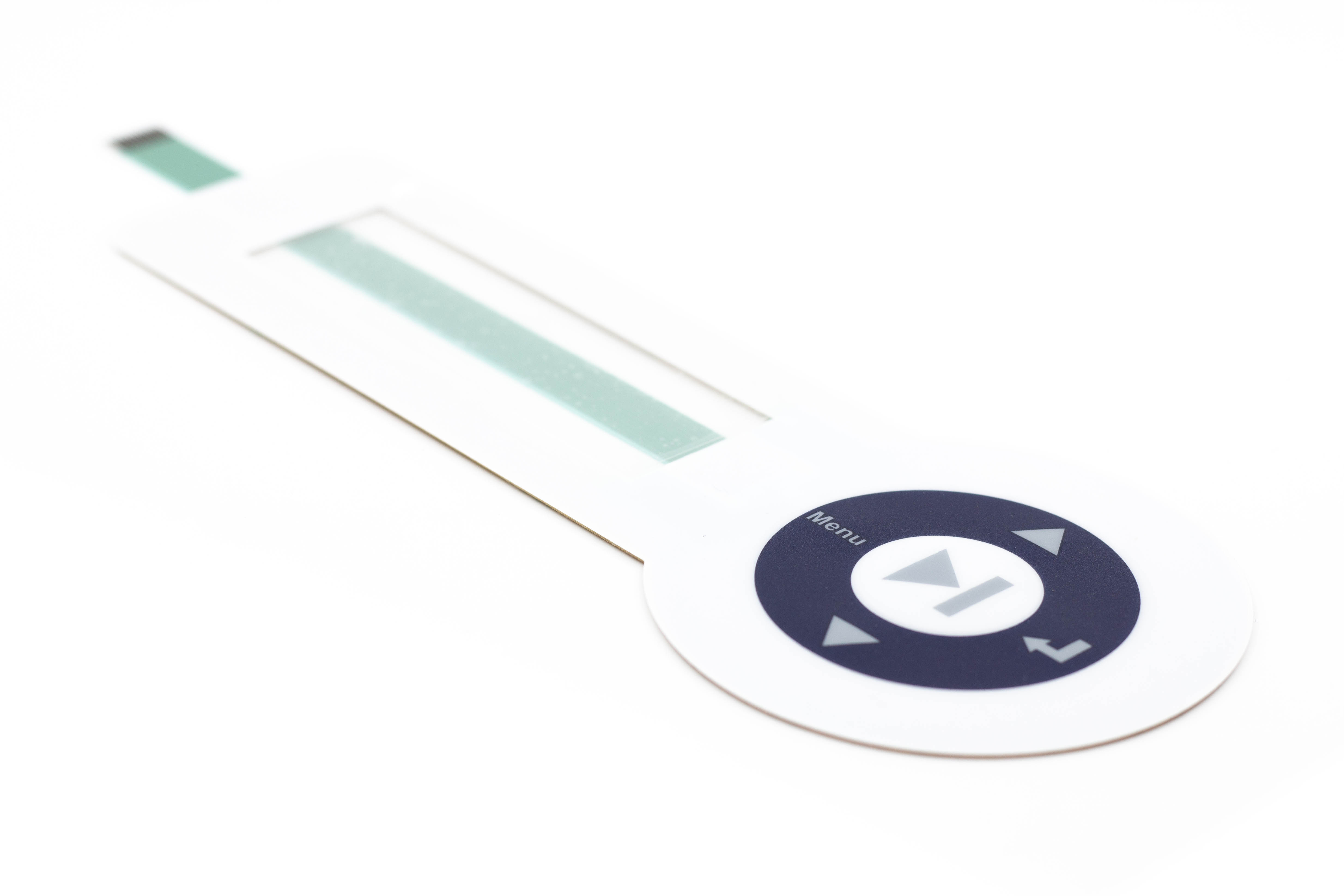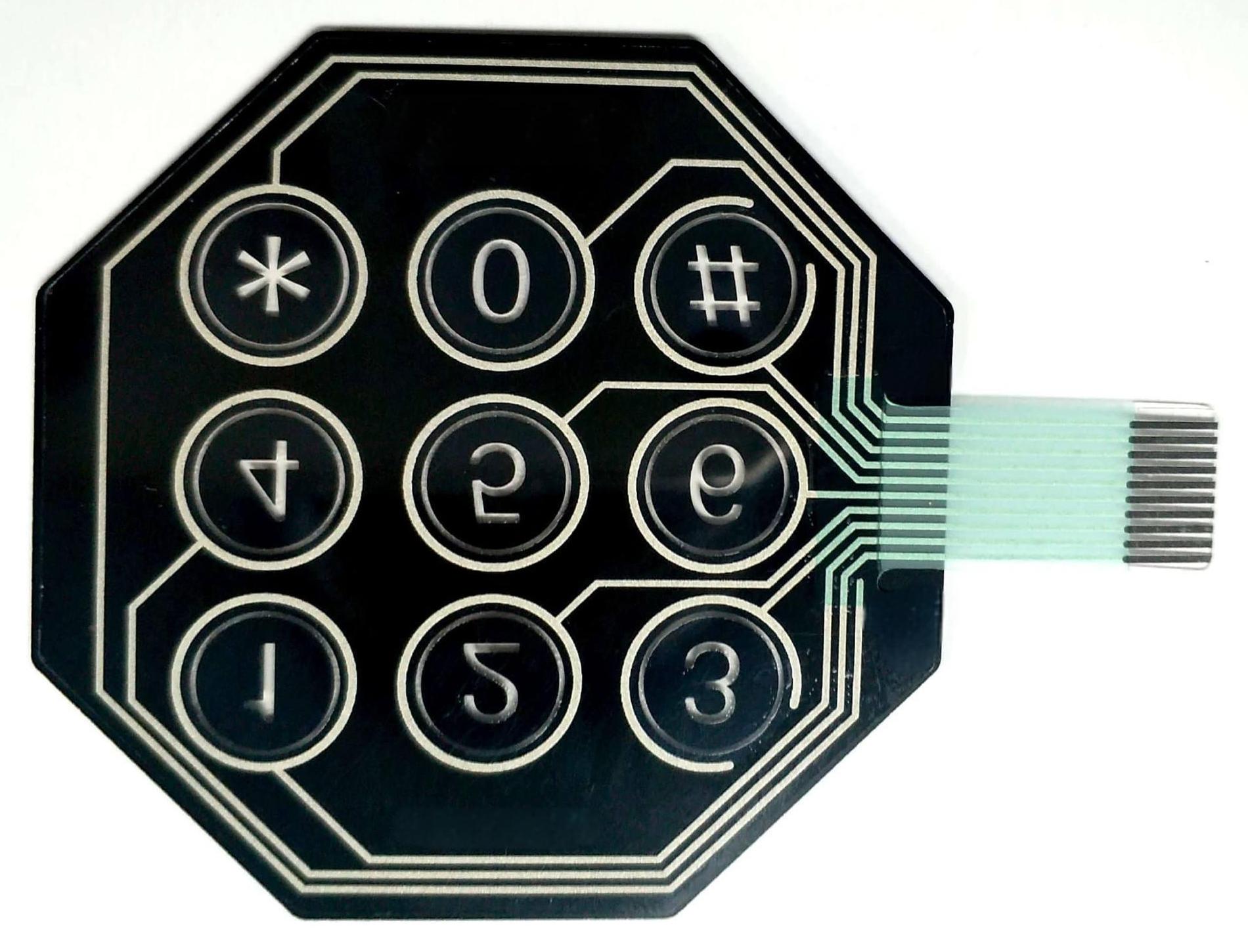The Manufacturing Refine Behind Membrane Switch Over: What You Need to Know
The production process behind membrane layer changes combines careful style, material option, and quality assurance. It begins with recognizing the ins and outs of membrane button design and proceeds through different stages, consisting of product options and printing strategies. Each phase plays an important function in making sure performance and toughness. The complexities of layer construction and the extensive screening standards might disclose insights that are not quickly apparent. What lies beyond these fundamental elements?
Understanding Membrane Layer Switch Style
Although membrane switches might show up easy initially glance, their design includes complex considerations that assure capability and resilience. The layout process begins with a complete understanding of customer demands, including the user interface's intended application and environmental variables. Functional designs is a crucial element, as the design needs to promote convenience of use while making certain that tactile comments meets customer expectations.Moreover, the layering of parts, such as visuals overlays, adhesive layers, and conductive traces, should be exactly crafted. membrane switch. This split setup not only affects the button's responsiveness but also affects its durability. Focus is offered to the sealing methods used to protect versus wetness and dust, which could endanger performance. Additionally, style factors to consider reach aesthetic appeals, where color pattern and visual quality enhance individual experience. Ultimately, the style of membrane switches over balances performance, customer experience, and toughness, ensuring that they satisfy the demands of different applications efficiently
Products Made Use Of in Membrane Layer Switch Over Manufacturing
When picking products for membrane switch manufacturing, it is crucial to consider both performance and resilience. The key materials consist of polyester and polycarbonate movies, which supply flexibility and stamina. These movies are commonly covered with adhesive to assure appropriate bonding to substrates. Conductive inks, usually composed of silver or carbon, are critical for developing electrical connections within the button, enabling trusted operation.Additionally, a safety layer, such as a tough coat, is often put on improve scratch resistance and long life. The choice of backing product, such as acrylic or foam, can considerably influence the button's responsive feel and overall user experience. Moreover, different ecological variables, including temperature level and humidity, ought to direct product choice to assure peak performance in particular applications. Ultimately, the best mix of products adds to the membrane layer switch's performance and life-span, making notified selections crucial for suppliers.
The Printing Process: Creating Video and Text
The printing process in membrane button production plays a substantial function in producing high-quality graphics and text. Various visuals layout techniques are employed to guarantee aesthetic appeal and performance, while cautious ink selection techniques are necessary for sturdiness and efficiency. Understanding these components is fundamental for accomplishing ideal lead to membrane switch design.
Graphic Style Techniques
Graphic layout strategies play an important duty in the printing process of membrane buttons, as they specify exactly how graphics and message will eventually show up on the end product. Effective visuals style involves the strategic use colors, font styles, and layouts to enhance readability and visual appeal. Designers commonly utilize vector graphics for scalability, making certain that pictures continue to be sharp at various dimensions. In addition, focus to contrast and alignment is crucial, as it influences user communication and visual quality. The consolidation of branding components, such as logo designs, need to be taken care of with care to keep brand stability. On the whole, thoughtful graphic style strategies contribute significantly to the capability and beauty of membrane layer buttons, influencing customer experience and product performance.
Ink Choice Approaches
Selecting the proper ink is essential for achieving the preferred aesthetic top quality and sturdiness in membrane layer button manufacturing. Various ink types are used, consisting of solvent-based, water-based, and UV-curable inks. Each kind supplies distinct qualities, such as flexibility, resistance, and bond to ecological variables. Solvent-based inks are often favored for their sturdiness and vivid shades, while water-based inks are extra eco-friendly yet might have constraints in attachment. UV-curable inks give quick healing and durable efficiency. Furthermore, shade matching strategies assure that the picked inks line up with style specs. Eventually, the option of ink should think about elements such as application method, substrate compatibility, and end-use requirements to attain premium lead to membrane switch graphics and text.
Layer Construction and Setting Up

Product Option Process
A careful selection of materials is vital in the production procedure of membrane layer buttons, as it straight affects functionality and resilience. The main products utilized consist of over at this website polyester, polycarbonate, and different conductive inks. Polyester is commonly preferred for its superb resistance to chemicals and abrasion, making it ideal for rough environments. Polycarbonate, on the various other hand, gives superior quality and influence resistance, which is beneficial for applications requiring visibility and robustness. Conductive inks, generally composed of silver or carbon, are vital for creating reliable electric paths. In addition, the option of sticky products affects the general stability of the button - membrane switch. Reviewing variables such as ecological direct exposure, responsive comments, and aesthetic needs overviews makers in choosing the finest materials for their specific applications
Layer Bond Techniques
Sticking layers in membrane layer switch building and construction is an essential procedure that ensures functionality and long life. Different adhesion strategies are used to protect optimal bonding between layers, which commonly consist of making use of adhesives, warmth, and pressure. Pressure-sensitive adhesives (PSAs) are commonly made use of for their simplicity of application and immediate bonding abilities. Additionally, thermal bonding strategies can be applied, where warmth is utilized to turn on sticky properties, safeguarding a strong bond. The selection of adhesion approach mostly relies on the materials entailed and the particular application needs of the membrane layer button. Proper placement and uniform application of adhesives are important to stop issues, protecting the button operates successfully throughout its desired life expectancy.
Top Quality Control Steps
Assuring quality assurance throughout the layer construction and setting up of membrane layer switches is vital for keeping performance and reliability. This procedure commonly involves a number of essential measures, including detailed inspections at each stage of production. Makers make use of advanced testing methods, such as peel tests and bond analyses, to verify the honesty of layer bonds. In addition, aesthetic assessments are performed to recognize any type of problems in printing or material disparities. Ecological conditions, such as temperature and moisture, are meticulously kept track of to assure excellent healing and adhesion. Regular calibration of equipment helps keep specific production criteria. By applying these quality assurance procedures, makers can considerably minimize the danger of product failure, assuring that the last membrane switches meet the called for requirements and client expectations.
Testing and Top Quality Control Actions

Technologies in Membrane Layer Change Technology
As advancements in modern technology remain to evolve, membrane layer switches are benefiting from cutting-edge advancements that enhance their capability and individual experience. One notable technology is the combination of capacitive touch technology, which enables more receptive and user-friendly YOURURL.com user interfaces. This change not only boosts aesthetic appeals but additionally decreases mechanical damage, prolonging the life-span of the switches.Additionally, developments in visuals overlay materials have actually resulted in boosted sturdiness and resistance to ecological elements such as dampness and UV light. These materials currently offer improved quality and brightness, additional elevating the visual appeal.Furthermore, the incorporation of wise modern technology is transforming membrane switches over into interactive control panels, making it possible for connectivity with IoT devices. This connection cultivates a seamless individual experience, leading the way for applications in various markets, from medical care to consumer electronics. Collectively, these technologies position membrane changes as essential elements in contemporary tool layout.
Frequently Asked Concerns
For how long Does the Membrane Layer Switch Over Manufacturing Process Take?
The duration of the membrane switch manufacturing procedure can differ substantially. Variables such as intricacy, materials used, and production volume influence timelines, with common production ranging from a few days to a number of weeks for completion.
What Are the Typical Applications for Membrane Switches?
Membrane switches are typically utilized in various industries, including automobile controls, home appliances, medical devices, and consumer electronic devices (membrane switch). Their versatility and durability make them perfect for applications requiring user-friendly user interfaces and reliable efficiency in varied atmospheres
Can Membrane Switches Be Customized for Specific Demands?

What Is the Life expectancy of a Normal Membrane Layer Switch?
The life expectancy of a normal membrane layer button differs, but typically, it ranges from 1 to 5 million cycles. Aspects such as use, setting, and worldly top quality greatly influence sturdiness and general efficiency gradually.

Are Membrane Switches Over Eco Pleasant?
The ecological kindness of membrane switches varies. Some products made use of might not be recyclable, while others can be environment-friendly. The general effect depends on manufacturing techniques and products, necessitating mindful factor to consider during selection and disposal. The production procedure behind membrane switches combines mindful style, material option, and top quality control. It begins with understanding the details of membrane layer switch design and proceeds with various phases, including product options and printing techniques. When picking materials for membrane layer button manufacturing, it is crucial to consider both performance and durability. A cautious selection of products is vital in the manufacturing procedure of membrane buttons, as it directly affects functionality and longevity. The look these up option of attachment technique greatly depends on the materials entailed and the certain application requirements of the membrane button.